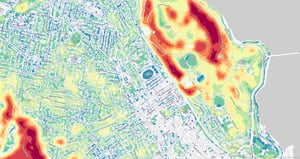
Geoneon Wildfire Severity Index
High-Resolution Wildfire Severity Index for Long-Term Preparedness
Wildfires are a growing threat to communities, ecosystems, and infrastructures worldwide. Understanding the potential severity of a wildfire before it occurs is crucial for effective risk management and disaster preparedness.
Geoneon's Wildfire Severity Index leverages advanced AI algorithms and high-resolution satellite imagery to predict fire severity across landscapes. This product provides detailed layers that show the expected severity if a wildfire were to occur, empowering stakeholders to make informed decisions for resource allocation, mitigation planning, and environmental protection.
Our model considers key parameters including:
- Vegetation type and density to assess fuel availability.
- Topography to understand how the landscape influences fire severity.
- Climate data to factor in long-term precipitation paterns.
A scalable dataset with transparent pricing, eliminating geographical limitations and minimising the dependency on traditional field measurements or airborne surveys.
AI-powered processing not only accelerates the initial mapping process but also allows for fast and consistent updates.
Designed for easy integration into any GIS workflow without the need for complex system changes or specialised training.
A scalable dataset with transparent pricing, eliminating geographical limitations and minimising the dependency on traditional field measurements or airborne surveys.
AI-powered processing not only accelerates the initial mapping process but also allows for fast and consistent updates.
Designed for easy integration into any GIS workflow without the need for complex system changes or specialised training.
Empowering Decision-Makers to Act with Confidence
The ability to predict fire severity before it happens is invaluable for governments, emergency planners, and environmental managers. Geoneon's Wildfire Severity Index offers a powerful solution for visualising potential wildfire severity across any landscape. This data helps you prioritise resources and develop targeted mitigation strategies.
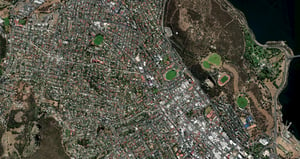
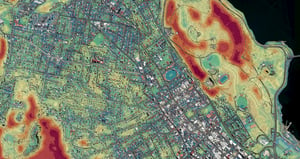
World Imagery Sources: Esri, DigitalGlobe, GeoEye, i-cubed, USDA FSA, USGS, AEX, Getmapping, Aerogrid, IGN, IGP, swisstopo, and the GIS User Community
Calibrated with Real-World Fire Data
Our Wildfire Severity predictions are powered by sophisticated AI models that have been calibrated using historical wildfire data, remote sensing inputs, vegetation, topography, and climate data. By integrating these diverse data sources, our models can predict the severity of potential wildfires across various landscapes.
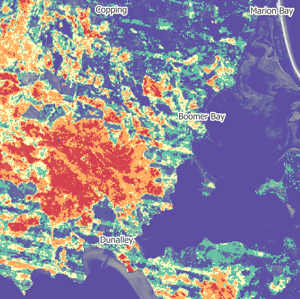
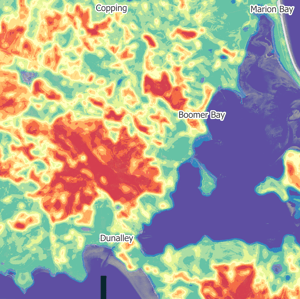

In January 2013, bushfires devastated Dunalley, Tasmania, destroying 30% of the town. We compared the dNBR with GeoNeon’s Wildfire Severity Index, and our model demonstrated strong predictive accuracy. These case studies highlight our model's effectiveness in forecasting wildfire severity and its potential to improve long-term preparedness and reduce risks in future events.
Continuous Insight Through Time
In the dynamic world of vegetation management, the ability to monitor changes over time is indispensable. Geoneon's Vegetation Mapping provides an unparalleled solution, offering detailed insights into the evolution of both tree and low-lying vegetation across any landscape. By harnessing high-resolution satellite imagery at both 30cm and 10m scales, our technology captures the intricate details of vegetation growth, health, and changes from year to year, offering flexibility in resolution to suit various monitoring needs.

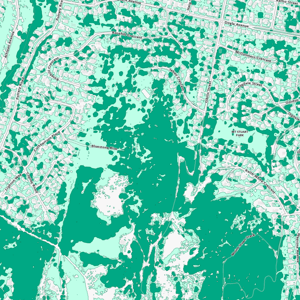

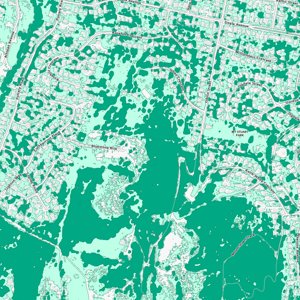
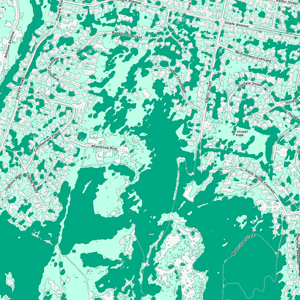
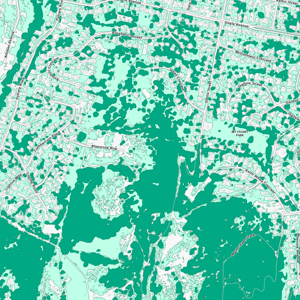
This sequence of images, spanning from 2017 to 2022, illustrates the power of Geoneon's Vegetation Mapping in monitoring vegetation changes over time. Each panel captures the annual state of vegetation, showcasing the detailed progression of tree and low vegetation development at 30 cm resolution across six years.
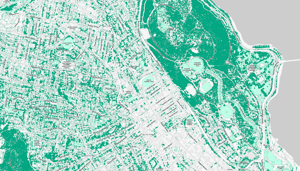

Outcomes from Geoneon Wildfire Severity Index
- Enhanced Preparedness: Predict wildfire severity to better prepare communities and infrastructure, reducing potential damage and enhancing safety.
- Targeted Mitigation Efforts: Focus resources on high-risk areas identified by the index, ensuring that mitigation efforts are both effective and efficient.
- Optimised Resource Allocation: Streamline the deployment of mitigation measures, enabling better planning and resource allocation.
- Cost Efficiency: Reduce the financial burden of wildfire management by targeting interventions where they are most needed, avoiding unnecessary expenses.
- Informed Strategic Planning: Utilise detailed severity predictions to guide long-term planning, policy-making, and land management strategies.
Current Data for Informed Decisions
In the ever-changing landscape of wildfire management, relying on outdated models can lead to missed opportunities and increased risks. Geoneon’s Wildfire Severity Index ensures that you have access to the most current and accurate data, reflecting the latest conditions on the ground. By incorporating up-to-date vegetation data and other environmental factors, our model provides fast, reliable updates that are crucial for proactive risk management.
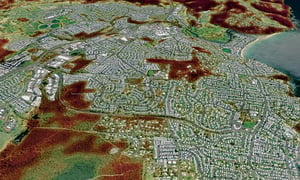
Source: Airbus, USGS, NGA, NASA, CGlAR, NLS, OS, NMA, Geodatastyrelsen, GSA, GSl and the GIS User Community, Map data @ OpenStreetMap contributors, Microsoft, Facebook, Google, Esri Community Maps contributors, Map layer by Esri, Maxar
The Wildfire Severity Index provides critical insights into the potential exposure of buildings and communities to wildfire hazard. When used in conjunction with other datasets, this information supports more effective risk assessment and targeted protective measures for at-risk areas.
Choose Your Resolution
- Standard: 10m resolution mapping, perfect for baseline severity predictions for large areas.
- High-Res: 50cm resolution mapping offers detailed severity mapping for critical regions.
- Combined: A tailored solutions that combine both 10m and 50cm resolutions for comprehensive, multi-scale project insights.
Standard
AU$3/km2
Product Description
Provides essential 10 m resolution mapping for broad areas.
Minimum order of 10,000 km2.
High-Res
AU$300/km2
Product Description
Delivers detailed 50cm resolution mapping critical for applications in urban and infrastructure settings.
Minimum order of 100 km2.
Combined
Contact us for pricing
Product Description
Combines 10m and 50cm resolution mapping for versatile urban and rural projects.
Minimum order of 5,000 km2.
Additional Services
- Advanced data analysis and reporting tailored to specific client needs. (Contact for pricing)
- Assistance with integrating Geoneon data into existing systems or workflows. (Contact for pricing)
Notes
- Bulk discounts may apply for large-area contracts.
- Custom coverage areas and additional resolutions may be available upon request.

Ready to revolutionise your approach to wildfire severity mapping?
Click the button below to connect with our sales team today. Start your journey toward smarter, more proactive wildfire risk management now.Learn about Geoneon Wildfire Severity Index and how our customers leverage this product
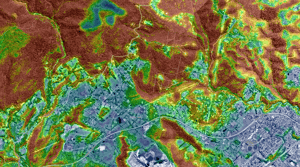
Geoneon, a leader in geospatial technology and climate risks, is proud to announce the launch of its revolutionary platform dedicated to assessing bushfire exposure in the Greater Hobart area.
Read More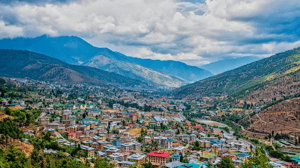
Geoneon, in partnership with the Bhutanese Government, has initiated a project to develop an open-source tool for assessing the vulnerability of critical infrastructure to climate hazards.
Read More
Discover our innovative approach to
wildfire severity, blending Al technology
with advanced satellite imagery.
Your Questions, Answered
The Wildfire Severity Index is a tool that predicts how severe a wildfire could be if it were to occur in a specific area. Geoneon's Wildfire Severity Index uses advanced satellites and AI (Artificial Intelligence) to create detailed maps showing the expected severity of wildfires across different landscapes.
What sets Geoneon apart is how we combine cutting-edge satellite technology with intelligent computer algorithms that learn from data. This method allows us to provide accurate, timely predictions over large areas, making it an invaluable resource for emergency planners, environmental managers, and anyone involved in risk assessment and disaster preparedness.
Geoneon offers two main types of wildfire severity mapping: one with a 10-metre (Standard) resolution and another with a 50-centimetre (High-Res) resolution.
-
The 10m Standard option provides a broader view, ideal for assessing large regions and identifying general areas of risk. It is perfect for large-scale projects that require an overall assessment of wildfire severity across extensive landscapes.
-
The 50cm High-Res option offers detailed insights, allowing you to focus on specific areas, such as urban environments or critical infrastructure. This resolution is ideal for projects requiring high precision, like urban planning, infrastructure protection, or localized risk assessments.
Choosing the right resolution depends on your project’s scope. The 50cm High-Res is best for detailed, smaller areas, while the 10m Standard is suited for broader, regional overviews.
Yes, Geoneon’s Wildfire Severity Index data integrates seamlessly into your existing GIS workflow. Since our wildfire severity data is provided as a raster—a common format used in GIS systems—integration is straightforward.
Here’s how you can integrate it:
- Download the Raster File: After purchasing or accessing Geoneon’s data, you will receive a data package.
- Open Your GIS Software: Use any standard GIS software you are already familiar with.
- Import the Raster: Within your GIS software, use the "Add Data" or "Import Layer" option to load the Geoneon raster file.
- Analyse and Use: With the data now in your GIS system, you can start analysing and incorporating it into your wildfire management projects.
The Wildfire Severity Index can be updated at a maximum frequency of every 10 days for the 10m Standard resolution and daily for the 50cm High-Res resolution. However, it is important to note that each update is priced individually, meaning that the cost covers a single iteration of the data.
If you are interested in frequent updates, we can work with you to determine the best schedule based on your project needs and budget. The frequency of updates may also be influenced by factors such as satellite orbit and environmental conditions, like cloud cover, which can occasionally cause delays in acquiring new imagery.
Please contact us for more details on pricing and to discuss how we can tailor the update schedule to your specific requirements.
Yes, Geoneon can provides access to historical wildfire severity data.
For both our 10m Standard and 50cm High-Res mapping, you can access data that goes back to 2015. This allows you to analyse how wildfire risks have evolved over time.
However, please note that the availability of historical data may be limited by factors such as the satellite's operational schedule, environmental conditions (e.g., cloud cover), and targeted areas at the time of data collection. These factors can lead to gaps in the historical data for some regions, but overall, a significant amount of past data is available for analysis.
Yes, you can get a sample of our Wildfire Severity Index data to evaluate its quality and determine if it meets your project needs before purchasing. Simply visit this link to download the sample dataset.

Get a glimpse of the wildfire severity index.
Experience the power of high-resolution wildfire severity mapping to enhance your environmental and infrastructure projects.